Britpop was a mid-1990s British-based music culture movement that emphasised Britishness. Musically, Britpop produced bright, catchy alternative rock, in reaction to the darker lyrical themes and soundscapes of the US-led grunge music and the UK's own shoegaze music scene. The movement brought British alternative rock into the mainstream and formed the larger British popular cultural movement, Cool Britannia, which evoked the Swinging Sixties and the British guitar pop of that decade.

Blur are an English rock band formed in London in 1988. The band consists of singer Damon Albarn, guitarist Graham Coxon, bass guitarist Alex James and drummer Dave Rowntree. Their debut album, Leisure (1991), incorporated the sounds of Madchester and shoegaze. Following a stylistic change influenced by English guitar pop groups such as the Kinks, the Beatles and XTC, Blur released the albums Modern Life Is Rubbish (1993), Parklife (1994) and The Great Escape (1995). As a result, the band helped to popularise the Britpop genre and achieved mass popularity in the UK, aided by a widely publicised chart battle with rival band Oasis in 1995 dubbed "The Battle of Britpop".

Damon Albarn is an English musician. He is the frontman and main lyricist of the rock band Blur and the co-creator and primary musical contributor of the virtual band Gorillaz.
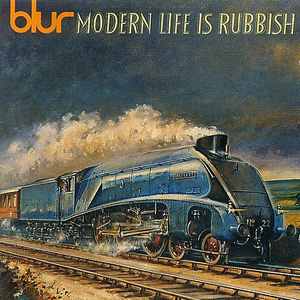
Modern Life Is Rubbish is the second studio album by the English alternative rock band Blur, released in May 1993. Although their debut album Leisure (1991) had been commercially successful, Blur faced a severe media backlash soon after its release, and fell out of public favour. After the group returned from an unsuccessful tour of the United States, poorly received live performances and the rising popularity of rival band Suede further diminished Blur's status in the UK.

Think Tank is the seventh studio album by the English rock band Blur, released on 5 May 2003. Continuing the jam-based studio constructions of the group's previous album, 13 (1999), the album expanded on the use of sampled rhythm loops and brooding, heavy electronic sounds. There are also heavy influences from dance music, hip hop, dub, jazz, and African music, an indication of songwriter Damon Albarn's expanding musical interests.

The Great Escape is the fourth studio album by the English rock band Blur. It was released on 11 September 1995 on Food and Virgin Records. The album reached number one on the UK Albums Chart and charted in the top 10 in more than ten countries around the world. Less than a year after the album was released, it was certified triple platinum in the UK. The album received near-universal acclaim on release.

Blur is the fifth studio album by the English rock band Blur, released on 10 February 1997 by Food Records. Blur had previously been broadly critical of American popular culture and their previous albums had become associated with the Britpop movement, particularly Parklife, which had helped them become one of Britain's leading pop acts. After their previous album, The Great Escape, the band faced media backlash and relationships between the members became strained.
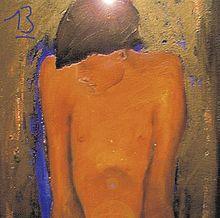
13 is the sixth studio album by the English alternative rock band Blur, released on 15 March 1999. Continuing the stylistic shift away from the Britpop sound of the band's early career, 13 explores experimental, psychedelic and electronic music.

Blur: The Best Of is a greatest hits compilation album by English Britpop band Blur, first released in late 2000 and is the final Blur album by Food Records. It was released on CD, cassette tape, MiniDisc, double 12" vinyl record, DVD and VHS. The CD album includes 17 of Blur's 23 singles from 1990 to 2000, plus non-single, "This Is a Low". A special edition of the CD version included a live CD. The DVD/VHS version contains the videos of Blur's first 22 singles. The album, which has had enduring sales, hit number 3 in the band's native UK in the autumn of 2000, while denting the US charts at number 186. The cover is by artist Julian Opie. The painting of this Blur album can be found at the National Portrait Gallery in London, England.

"Country House" is a song by English alternative rock band Blur. It was released as the lead single from the band's fourth studio album, The Great Escape (1995), on 14 August 1995 by Food and Parlophone. Released on the same day as the Oasis single "Roll with It" – in a chart battle dubbed the "Battle of Britpop" – "Country House" reached number one in the UK Singles Chart. The song is the band's best-selling single, with over 540,000 copies sold as of May 2014. Its music video was directed by Damien Hirst and nominated for Best Video in the 1996 BRIT Awards.
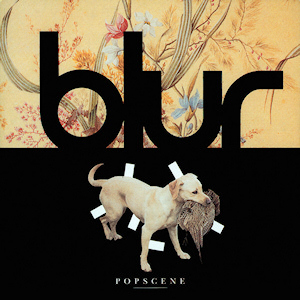
"Popscene" is a song by English alternative rock band Blur, released as a non-album single on 30 March 1992. Despite its relatively low chart placing, it has since become critically praised and regarded as one of the pioneering songs of the Britpop genre.

"Song 2" is a song by English rock band Blur. The song is the second song on their eponymous fifth studio album. Released physically on 7 April 1997, "Song 2" peaked at number two on the UK Singles Chart, number four on the Australian ARIA Singles Chart, and number six on the US Billboard Modern Rock Tracks chart.
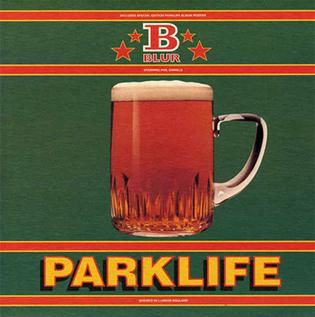
"Parklife" is a song by the English rock band Blur, released in August 1994 by Food and Parlophone as the third single from the band's third studio album, Parklife (1994). The song contains spoken-word verses by the actor Phil Daniels, who also appears in the music video, which was directed by Pedro Romhanyi.
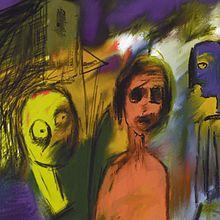
"Coffee & TV" is a song by British rock band Blur. It was written by the band's guitarist, Graham Coxon, who also sang lead vocals rather than frontman Damon Albarn. The song appears on Blur's sixth studio album, 13 (1999), and was the second single released from the album on 28 June 1999. The lyrics describe Coxon's struggle with alcoholism and the song's video, featuring a sentient milk carton searching for Coxon, won several awards. Commercially, "Coffee & TV" reached No. 11 in the United Kingdom and No. 26 in Ireland. It was a major hit in Iceland, where it peaked at No. 2 in September 1999.

"Girls & Boys" is a song by English rock band Blur, released in March 1994 by Food Records as the lead single from the group's third studio album, Parklife (1994). The frontman of Blur, Damon Albarn wrote the song's lyrics with bandmembers Graham Coxon, Alex James and Dave Rowntree, while Stephen Street produced it.

"To the End" is a song by English alternative rock band Blur. It appears on their third studio album, Parklife (1994), and was released as a single in May 1994 by Food Records. The song describes a couple unsuccessfully trying to overcome a bad patch in a relationship, and features full orchestral accompaniment with a choric refrain in French by Lætitia Sadier from Stereolab. The song was produced by Stephen Hague, unlike the rest of the Parklife album, which was produced by Stephen Street. Blur have produced several different recordings of the song.

"End of a Century" is a song by English alternative rock band Blur. Released in November 1994 by Food Records, it was the last single to be released from their third album, Parklife (1994). The song reached number 19 on the UK Singles Chart, considered a disappointment by Andy Ross of Food. Damon Albarn later stated that "End of a Century" may not have been the best choice for the album's fourth single, and that "This Is a Low" would have been a better alternative.
"This Is a Low" is a song by English rock band Blur for their third studio album, Parklife. The song was released as a promotional single in 1995.

Leisure is the debut studio album by English rock band Blur, released by Food Records on 27 August 1991.
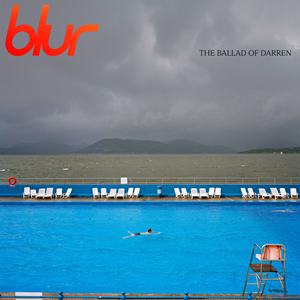
The Ballad of Darren is the ninth studio album by English rock band Blur. It was released on 21 July 2023 by Parlophone and Warner Records. The album's songs were written by frontman Damon Albarn in 2022 while on tour with Gorillaz, and composed by Albarn and the rest of the band. It was produced by James Ford at Studio 13 in London and Devon. It is Blur's first album since The Magic Whip (2015), and their shortest album, with a runtime under 40 minutes. The album's artwork features a 2004 photograph of a man swimming alone in the Gourock Outdoor Pool in Gourock, Scotland, taken by Martin Parr. Its title refers to Darren "Smoggy" Evans, the band's longtime bodyguard.


















